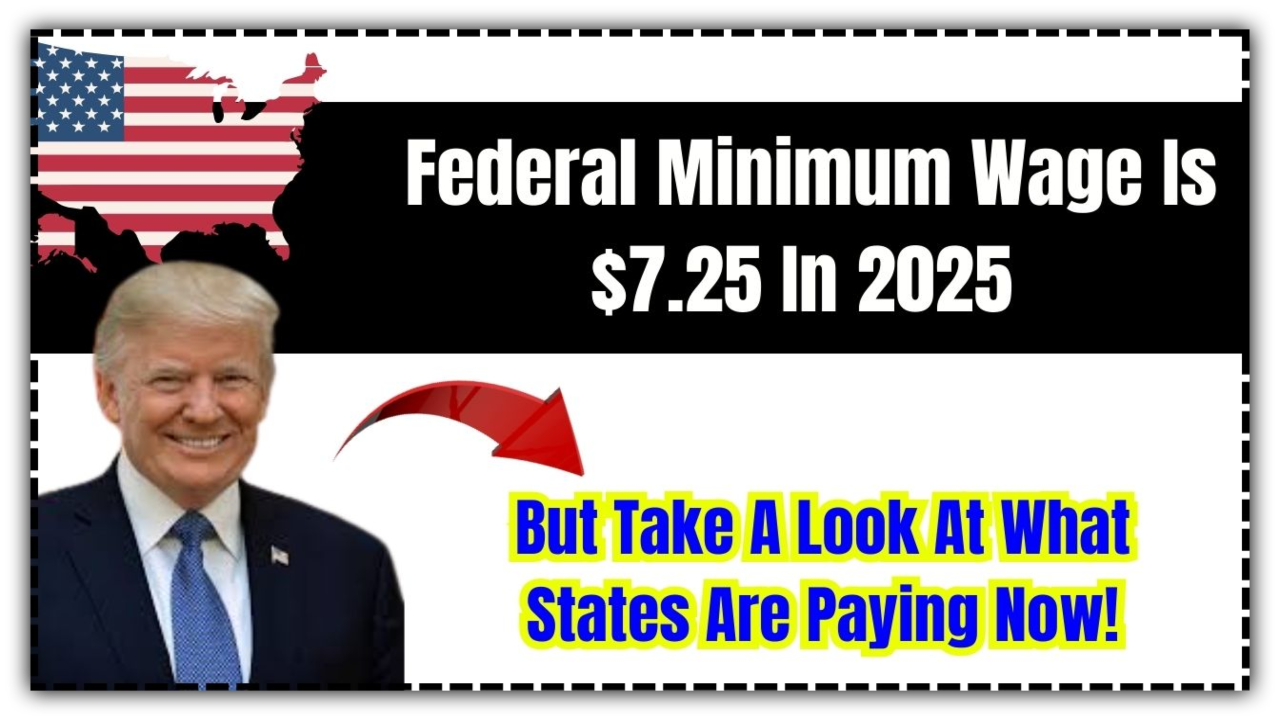Is Your State Paying More Than $7.25 an Hour? Find Out What You Could Be Earning!
Okay, let’s talk about the $7.25 federal minimum wage. If that number sounds familiar, that’s because it’s been stuck at $7.25 per hour for 16 years. Yep, since 2009. Now, it’s 2025, and it feels like the world has changed in so many ways, but this wage still hasn’t budged.
So, if you’re wondering how this plays out in real life, you’re not alone. The truth is, in some states, $7.25 isn’t even close to what people are actually earning — and in other places, it’s still the sad, old standard.
Let’s dive into why some states have raised wages and others haven’t, and what this all means for workers right now.
Why Is the Federal Minimum Wage Still $7.25?
It’s crazy, right? The federal minimum wage has been the same for over 16 years. The last time it was raised was back in 2009. Since then, inflation has gone up, the cost of living has shot through the roof, and yet, workers across the country are still stuck with the same basic pay.
At $7.25 an hour, a full-time job (40 hours per week) would only bring in around $1,160 a month before taxes. If you’re trying to live on that, especially in today’s world where everything from rent to groceries keeps climbing, you’re probably feeling the squeeze. It’s clear that $7.25 just isn’t cutting it anymore.
States Are Taking Matters Into Their Own Hands
While the federal wage is still stagnant, a lot of states have stepped up to raise wages on their own. The cost of living isn’t the same everywhere, and some places have recognized that their workers need more to survive.
So, in some parts of the country, minimum wage has been raised — way higher than that $7.25 mark. Here’s what some of the highest paying states look like:
States with Higher Minimum Wages
-
California: $15.50 per hour — and in cities like San Francisco and Los Angeles, it’s even higher.
-
Washington: $15.74 per hour — and this continues to rise slightly every year to keep up with inflation.
-
Massachusetts: $15 per hour — this is a big help in a state where things can get pretty pricey.
-
Oregon: $14.75 per hour — definitely a step up for people living in cities where rent is high.
-
Colorado: $15.50 per hour — great news for workers in places like Denver, where the cost of living has been climbing steadily.
For workers in these states, $15 an hour means you can actually make enough to pay bills, cover rent, and live a bit more comfortably than someone stuck at the federal minimum.

Some States Are Still Sticking to $7.25
On the flip side, there are still states that are paying just $7.25 per hour because they’re sticking with the federal minimum wage. These places typically have a lower cost of living, but even then, $7.25 just doesn’t add up when you factor in things like rent, utilities, and even groceries.
States that are still using the federal minimum wage include:
-
Wyoming: $7.25 per hour
-
Georgia: $7.25 per hour
-
North Dakota: $7.25 per hour
Even though the cost of living might be cheaper in these places, workers here are still left trying to survive on the same rate that was set years ago. It’s a tough situation for anyone trying to get by on that amount.
The $15 Minimum Wage Debate
You’ve probably heard about the $15 minimum wage by now. It’s been a big topic, and it’s definitely one of the most debated issues in recent years. Advocates argue that $15 an hour should be the standard because it gives workers a fair chance at living with some dignity — especially in places with a high cost of living.
Cities like New York, Seattle, and San Francisco have already hit the $15 mark, and it’s been a huge relief for workers in these expensive areas. For example, in Seattle, they were one of the first to raise the wage to $15, and they’ve seen positive changes in worker health and economic stability.
But not everyone agrees that $15 is the magic number. Some argue that it could hurt small businesses or lead to higher prices for consumers, particularly in places where the cost of living isn’t as high. So, it’s a balancing act, and the debate rages on.
Why Do Some States Have Higher Wages Than Others?
It all comes down to the local economics. In states with high costs of living (like California and New York), it makes sense to raise the minimum wage so people can actually afford to live. But in more rural states with lower living costs, there’s a fear that raising the minimum wage could hurt small businesses or lead to price hikes for things like food and services.
The goal is to make sure that wages reflect the real cost of living in each area. And while it might not be a perfect system, it’s the reality we’re dealing with right now.
So, here’s the deal: while the federal minimum wage of $7.25 per hour is still in place, many states are stepping up and paying their workers more. If you’re in California, Washington, or Colorado, you’re probably making a lot more than the federal baseline — which is a good thing, especially with everything getting more expensive.
But if you’re in places like Wyoming or Georgia, you’re still stuck at the outdated $7.25, and that can make life tough.
As the cost of living continues to rise, the question of raising the minimum wage is going to keep coming up. The hope is that eventually, we’ll see a shift toward fairer wages across the board, but in the meantime, the states with higher wages are doing their best to help workers get ahead.


Comments are closed, but trackbacks and pingbacks are open.